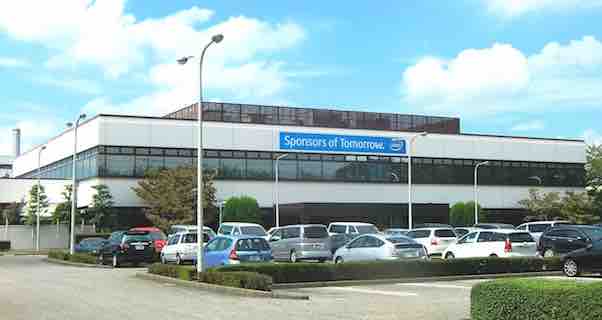
Intel Corporation’s organizational structure is based on the nature of the technology business. For instance, the conditions of the market for microprocessors and related technologies impose challenges that the company can address through its current organizational structure. A firm’s organizational or corporate structure is the composition or arrangement of components necessary to keep a system of effective and efficient operations. In Intel’s case, the business structure is strongly based on product types. As a leading player in the semiconductor industry, the business uses the characteristics of its organizational structure to ensure the strengths identified in the SWOT analysis of Intel, for success in developing and marketing technological products to target customers around the world.
Product types define Intel’s organizational structure. This corporate structure is partly responsible for the company’s successful introduction of new semiconductor products. The company structure and overall organizational design also facilitate processes and capabilities for the achievement of business goals based on Intel’s mission statement and vision statement.
Intel’s Organizational Structure Type & Characteristics
Intel Corporation has a strong product-type divisional organizational structure. The company’s processors and related products are classified according to their functions and markets. The corporate structure takes this classification into consideration. The following are the main characteristics of Intel’s organizational structure:
- Product-type divisions (main feature)
- Function-based groups
- Geographical divisions
Product-Type Divisions. Product-type divisions are the strongest of the features defining the organizational structure of Intel. These divisions are based on the types of products that the company offers. For example, the Datacenter and AI Group is a division for products for energy-efficient servers and related technologies. Each of these corporate structural divisions is treated as a business segment that has its own set of strategies for marketing and business growth, although they all follow Intel’s generic competitive strategy and intensive growth strategies. The following are the product-type divisions in Intel’s organizational structure:
- Client Computing Group
- Datacenter and AI Group
- Network and Edge Group
- Accelerated Computing Systems and Graphics Group
- Intel Foundry Services
- Mobileye (Driving assistance & self-driving solutions)
Function-Based Groups. Function-based groups are the second most significant characteristic of Intel’s organizational structure. These groups or departments are based on administrative activities and managerial needs. For example, Intel’s CEO’s office and its staff are a functional group. This company structure’s People department implements human resource management programs, including those that sustain Intel’s company culture (work culture). Considering the emphasis on product types in the company’s corporate structure, many of these functional groups also correspond to certain product types, for the purpose of effective administration and management. Intel’s organizational structure has the following function-based groups:
- Office of the CEO
- Finance
- Global Operations
- Technology Development
- Software and Advanced Technology
- Legal and Secretariat
- People
- Corporate Planning Group
- Corporate Development
- Commerce
- Sales, Marketing, and Communications Group
- Design Engineering Group
- Strategy
Geographical Divisions. Intel Corporation has geographical divisions as a minor characteristic of its organizational structure. These structural divisions are mainly used for financial reporting and other minor managerial tasks. For example, the company assigns a geographical division for the U.S. market, considering this market’s significance in the semiconductor and microprocessor business. Intel has the following geographical divisions:
- U.S.
- Non-U.S.
Advantages & Disadvantages of Intel’s Structure
An advantage of Intel’s organizational structure is its enabling effect on product development efforts. For example, through the Client Computing Group, the company develops cutting-edge processors for notebooks and desktops. Intel’s organizational structure also has the advantage of strong corporate managerial control. For instance, strategies from the company’s headquarters are easily implemented through the functional groups or departments in the corporate structure.
Intel’s organizational structure has the disadvantage of its limited flexibility in addressing regional market differences. This disadvantage is based on the minimal significance of the geographical divisions in the corporate structure. Thus, a recommendation to improve Intel’s organizational structure is for increasing the significance of the geographical divisions, or to create new geographical divisions, to improve the company’s flexibility in addressing these differences among regional markets for semiconductors, microprocessors, and related technological products.
References
- Intel Corporation – Form 10-K.
- Intel Corporation – Management Team.
- Intel Corporation – Operating Segments.
- Niveditha, M., & Padhy, P. C. (2024). Impact of organizational structure and commitment on organizational citizenship behavior: Insights from the IT sector. Multidisciplinary Reviews, 7(9), 2024203-2024203.
- Wyland, R., Hanson-Rasmussen, N., & Clark, F. (2024). The structure-culture alignment activity: Aligning organizational structure elements with diversity, equity, and inclusion cultural values. Journal of Management Education, 48(1), 141-167.